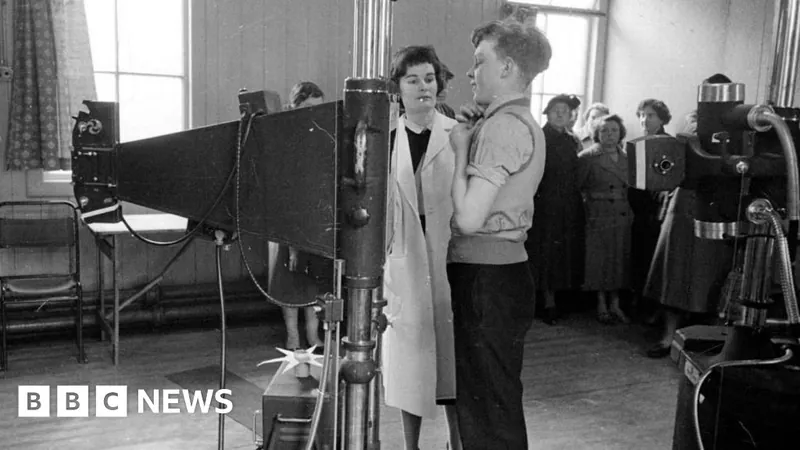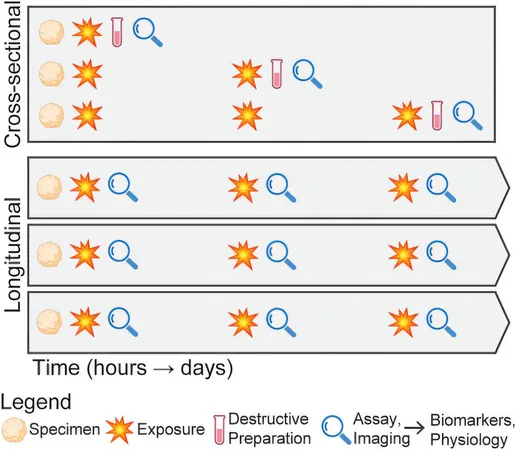
How a Bold Initiative Using Cigarettes, Chickens, and Chocolates Helped Combat a TB Epidemic in Glasgow
2024-11-05
Author: Ming
Introduction
In an astonishing chapter of public health history, Glasgow in 1957 implemented a massive campaign to battle tuberculosis (TB), which had reached alarming levels in the city. Remarkably, Glasgow boasted the highest TB death rate in Europe following World War II, prompting health officials to take action with a groundbreaking initiative that would change the course of the epidemic.
The X-ray Now Campaign
The "X-ray now" mass-screening campaign aimed to assess the health of over 700,000 residents within just five weeks. With a staggering 12,000 volunteers recruited, the city demonstrated an unparalleled spirit of community, ultimately mobilizing nearly three-quarters of its population to participate in this health initiative. To incentivize participation, the health authorities ingeniously offered enticing prizes—ranging from modern conveniences like TVs and holidays to far less conventional rewards, including chocolates, chickens, and even cigarettes.
Results and Impact
The campaign proved extraordinarily successful: it uncovered 2,369 cases of TB, leading to timely treatment for those infected. What’s more, a recent study conducted by the University of Glasgow revealed that, due to this robust screening initiative, an astounding 4,599 TB cases were prevented in the subsequent five years. This not only saved lives but also set a precedent for how communities could unite against public health crises.
Lessons for Today
Peter MacPherson, a professor of global public health at the University of Glasgow, emphasized the relevance of this historical effort in today’s fight against TB, a disease that still claims more than 1.2 million lives annually worldwide. "The mass screening significantly increased case detection rates and effectively reduced the prevalence of TB in Glasgow," he remarked, urging contemporary health officials to draw lessons from this remarkable campaign.
The Scale of the Initiative
The ambitious screening operation utilized 37 mobile X-ray units and enlisted radiographers from across the UK, illustrating the scale of the undertaking. The campaign also enjoyed extensive publicity, featuring loudspeaker vans, illuminated tram cars, and even aerial advertising, which ensured widespread community engagement.
Community Involvement and Spirit
Participants in the screening not only received badges but also had the chance to win additional prizes, creating a festive atmosphere around the vital health initiative. While some of the rewards, like cigarettes, may be viewed as inappropriate by today’s health standards, MacPherson noted that the overwhelming volunteer spirit was a sight to behold. "The residents of Glasgow truly banded together, going door to door to encourage participation," he said.
Context of TB in Glasgow
TB has historically thrived in conditions of poverty, and post-war Glasgow was no exception. Overcrowding, poor nutrition, and air pollution were rampant, contributing to the city's TB crisis. Today, however, TB hotspots have shifted primarily to Africa, Asia, and South America—all regions where poverty remains a critical issue.
The Ongoing Global Burden of TB
The ongoing global burden of TB is staggering. According to the World Health Organization, nearly 11 million people fell ill with the disease in just the last year, with more than a million fatalities. Symptoms of TB include persistent cough, weight loss, night sweats, fever, and in severe cases, death if untreated.
Conclusion
The Glasgow initiative stands as a compelling example of how community-driven public health campaigns can vastly improve outcomes. As we confront the ongoing challenges posed by TB and other infectious diseases around the globe, the lessons learned from 1957 are more relevant than ever. Embracing innovative strategies and fostering community spirit could be the key to eradicating TB in our time.

 Brasil (PT)
Brasil (PT)
 Canada (EN)
Canada (EN)
 Chile (ES)
Chile (ES)
 Česko (CS)
Česko (CS)
 대한민국 (KO)
대한민국 (KO)
 España (ES)
España (ES)
 France (FR)
France (FR)
 Hong Kong (EN)
Hong Kong (EN)
 Italia (IT)
Italia (IT)
 日本 (JA)
日本 (JA)
 Magyarország (HU)
Magyarország (HU)
 Norge (NO)
Norge (NO)
 Polska (PL)
Polska (PL)
 Schweiz (DE)
Schweiz (DE)
 Singapore (EN)
Singapore (EN)
 Sverige (SV)
Sverige (SV)
 Suomi (FI)
Suomi (FI)
 Türkiye (TR)
Türkiye (TR)
 الإمارات العربية المتحدة (AR)
الإمارات العربية المتحدة (AR)